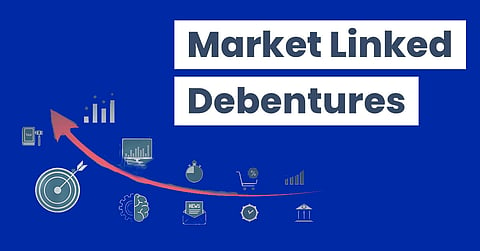Optimising portfolios
Market Linked Debentures (MLDs) are known as structured notes and are designed to generate targeted pay-off, based on fulfilment of underlying conditions. If S&P 500 Index grew up to 20 per cent in the next 18 months, you get 140 per cent of 20 per cent growth. So, if S&P 500 grows by, say, 20 per cent, an investor holding S&P 500 ETF or mutual fund makes about 20 per cent, but a structured notes holder gets 28 per cent. But, if S&P 500 was to generate negative returns, most products have principal protection, meaning you do not lose your capital, when the index loses its value.
India had this category mostly used by issuers/investors for tax arbitrage, because Section 112 of Income Tax Act allowed listed debt instruments to be taxed at 10 per cent, if capital gain is generated after holding for 12 months. For example, an NBFC offering normal NCD at 9 per cent will offer fixed income-oriented MLD at 8 per cent return. When an MLD investor booked returns as capital gains by selling MLD before maturity, he would make better tax efficient returns of 7.2 per cent (post 10 per cent tax on 8 per cent gain), as against making 6.30 per cent post tax (after paying 30 per cent tax on 9 per cent NCD return).
Over 90 per cent MLDs issued prior to 2023 were of this category, including those issued by some of the PSU companies also, which had nothing to do with ‘market’ in MLDs. The change in taxation for MLD would mean that, irrespective of you invest in NCD or MLD of such entities, you now need to pay tax as per your applicable tax slab only.
“The year 2023 saw two changes,” says Bhavik Thakkar, CEO, Abans Investment Managers. “First, the taxation on MLD was covered under Section 50AA of Income Tax Act, which charges tax on MLD as per slab rate of investors. And, the second, the face value of debentures was reduced from Rs10 lakh to Rs1 lakh”.
After the change in taxation in 2023, only those issuers who offered this product category for real targeted returns perspective have survived and thrived. Lots of innovations have happened in this category, like offering products with higher of the fixed income or Nifty returns. When market growth is uncertain or when market gets in time correction, such products offer better opportunity to optimise portfolio return, as investors or distribution partners are not required to select asset allocation, given that the product has in-built asset allocation benefit. MLDs linked with liquid stocks are also available, offering people a choice to generate stock linked returns with the benefit of principal protection.
Demystifying MLDs
Over the last two years, various trends have developed that highlight MLDs’ expanding importance. Financial institutions have increased the issuance of MLDs to meet rising demand, providing investors with a wider
range of possibilities. Also, investors can now explore, compare and invest in MLDs with a few clicks, making the process more efficient. Educational activities by financial advisers and institutions have also helped to demystify MLDs.
To add MLDs to a portfolio in 2025, one has to determine his/her financial goals and risk tolerance. MLDs are appropriate for investors who want to take on modest risk, while potentially earning bigger returns. Also, diversify among issuers to reduce issuer-specific risk and work with a financial advisor to choose products that correspond with your financial goals. And, keep track of the benchmarks associated with your MLDs and assess your portfolio regularly.
By lowering the minimum investment value, the government has allowed private investors access to a product category that offers a blend of stability and growth. MLDs remain an enticing investment choice, especially in an era of economic uncertainty and volatile market conditions. Their ability to provide downside protection, risk management and market-linked returns makes them a crucial part of a well-balanced portfolio. MLDs provide a unique opportunity for investors looking to balance safety and growth.
SEBI has recently introduced ‘Specialised Investment Fund’ as product category between MF and PMS. MLDs can be a candidate to be included in such new product categories, which have thrived in global markets as OTC (over the counter) products; it’s now time for India to leapfrog too.

